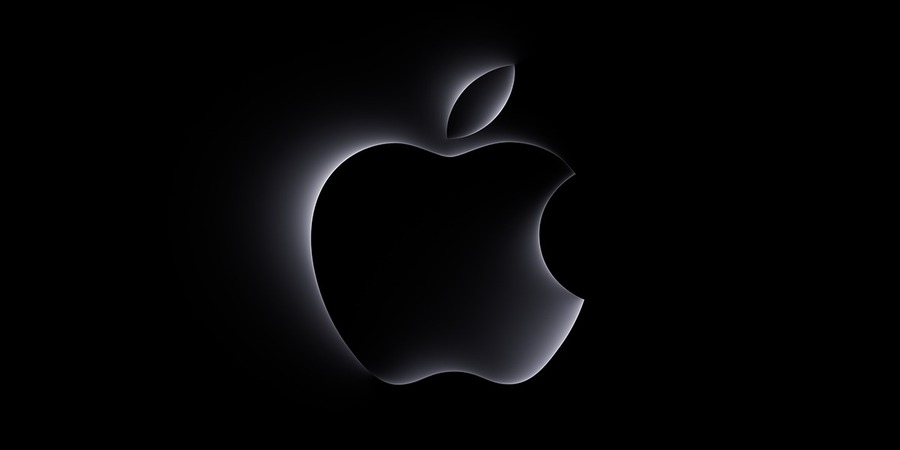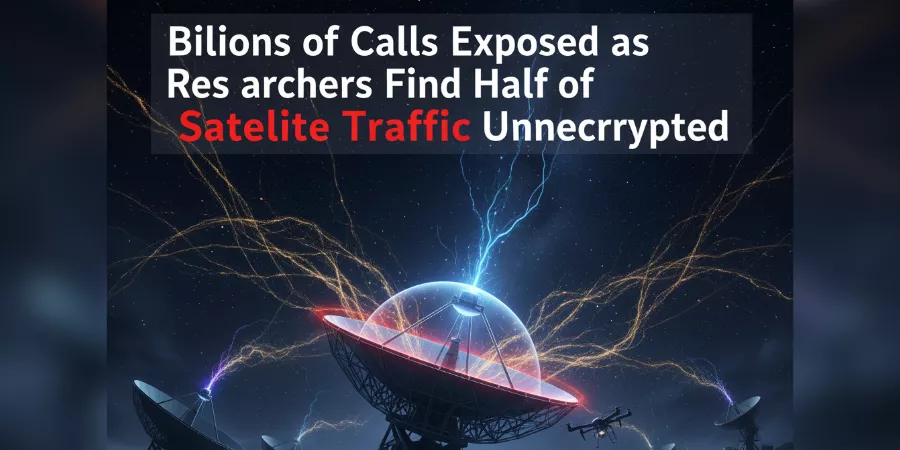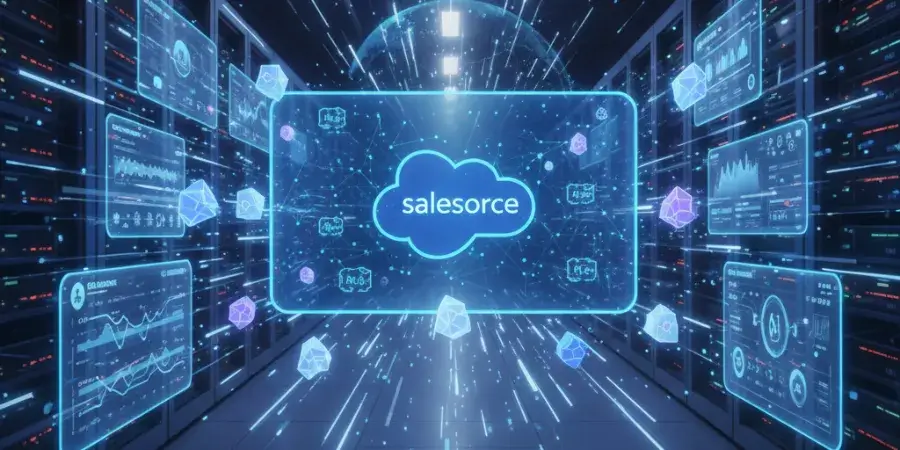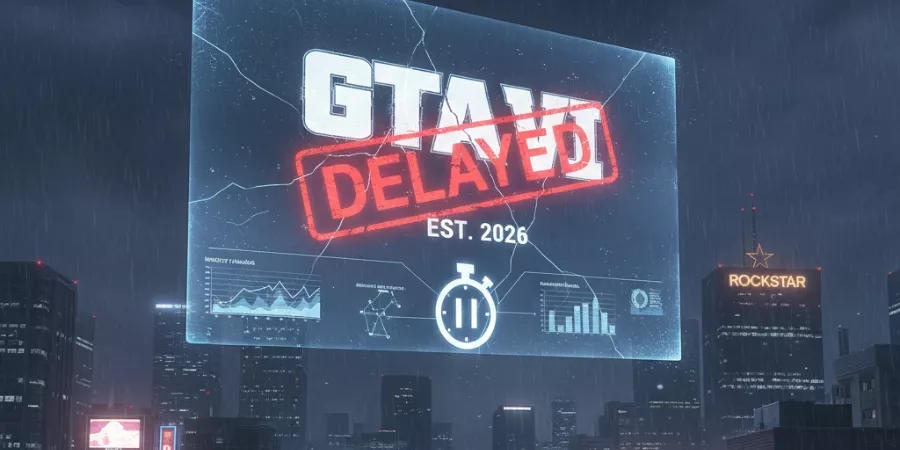Apple faces an unprecedented regulatory siege in Europe: three simultaneous enforcement actions threatening combined fines potentially exceeding $38 billion more than 10% of the company’s annual revenue. On June 24, 2024, the European Commission formally charged Apple with violating the Digital Markets Act (DMA) for restricting app developers from steering users to external payment options, marking the EU’s first-ever DMA enforcement action against a major tech platform. This followed a March 2024 €1.8 billion ($1.95 billion) fine for anticompetitive music streaming practices, and preceded June’s second DMA investigation into Apple’s new “Core Technology Fee” that critics argue creates alternative barriers to competitive app distribution. The EU’s coordinated assault represents regulatory escalation beyond isolated antitrust cases it’s a systematic dismantling of Apple’s closed ecosystem business model that generated $85.2 billion in services revenue (fiscal 2023), with App Store and related services contributing an estimated $25-30 billion. According to Wedbush Securities analysis, Europe represents 24% of Apple’s revenue ($95 billion annually), making regional compliance non-optional despite CEO Tim Cook’s characterization of EU regulations as creating “unavoidable security and privacy vulnerabilities.” This analysis examines each active investigation, Apple’s strategic responses, potential financial exposure, and long-term implications for the company’s highest-margin business unit.
The Digital Markets Act: Foundation of EU’s Big Tech Regulation
What Is the DMA and How Does It Target Apple?
The Digital Markets Act, which entered force March 6, 2024, imposes obligations on “gatekeeper” platforms companies controlling access to large user bases and ecosystems. The European Commission designated six gatekeepers (Alphabet, Amazon, Apple, ByteDance, Meta, Microsoft) covering 22 core platform services.
Apple’s designated gatekeeper services:
- iOS operating system
- App Store
- Safari browser (on iOS)
Key DMA obligations affecting Apple:
| Article | Requirement | Apple’s Pre-DMA Practice |
|---|---|---|
| Article 5(4) | Allow developers to inform users about alternative purchasing options | Prohibited “out of app” communication about alternative payment methods |
| Article 6(3) | Allow installation of apps from third-party app stores | Required all iOS apps distributed through App Store only |
| Article 6(4) | Allow use of third-party payment systems in apps | Mandatory use of Apple’s IAP (In-App Purchase) system with 15-30% commission |
| Article 6(5) | Allow apps to interoperate with gatekeeper services | Limited access to NFC chip (Apple Pay exclusive), restricted data portability |
| Article 6(7) | Provide equal treatment to gatekeeper’s own services | Favored Apple Music, Apple Arcade, Apple TV+ through iOS integration advantages |
Penalty structure:
- First violation: Up to 10% of global annual revenue (~$38 billion for Apple)
- Repeat violations: Up to 20% of global revenue (~$76 billion)
- Non-compliance: Daily penalties up to 5% of average daily worldwide revenue (~$520 million per day)
Apple’s Controversial DMA Compliance Package (January 2024)
Apple announced iOS 17.4 changes effective March 2024 to achieve nominal DMA compliance, but the implementation immediately drew regulatory skepticism:
Alternative app marketplace rules:
- Third-party app stores allowed but must meet Apple’s security/quality criteria (subjective gatekeeping)
- Developers must submit to notarization process (Apple retains approval control)
- Apps distributed outside App Store still subject to Apple’s developer agreement terms
New “Core Technology Fee” structure:
- €0.50 per install annually after 1 million installs
- Applies to ALL apps, even those distributed through alternative stores
- Developers must choose: Traditional App Store (15-30% commission) OR alternative distribution (€0.50 per install + 17% commission if using Apple’s payment processing)
Payment processing changes:
- Apps can link to external payment options, but:
- Must display Apple’s “warning screen” about leaving App Store
- Apple charges 12-27% commission on sales for 7 days after external payment link click
- Developers must report external sales to Apple for commission calculation
Critics immediately characterized these changes as “malicious compliance” technically meeting DMA letter while maintaining economic control through alternative mechanisms.
Investigation #1: DMA Violation Charges (June 2024)
The Formal Charges
On June 24, 2024, the European Commission announced preliminary findings that Apple violated DMA Article 5(4) through:
“Anti-Steering” Practices:
- Prohibiting developers from freely communicating with users about alternative purchasing options
- Imposing conditions (warning screens, commission fees) that make alternative payment options economically unviable
- Creating friction in user experience when developers attempt to direct users to external websites
Key excerpts from Commission’s preliminary findings:
European Commissioner Margrethe Vestager stated: “Our preliminary findings suggest that Apple’s new business terms do not allow app developers to freely steer consumers to alternative channels for offers and content. Apple’s measures impose various restrictions and limitations that prevent app developers from freely communicating, promoting offers, and contracting with their customers.”
The Commission identified specific violations:
- Link-out fee structure: Charging 12-27% commission on sales resulting from external links “defeats the purpose” of allowing alternative payment options
- Warning screens: Apple’s mandatory interstitial screen warning users about leaving App Store creates psychological friction discouraging alternative purchasing
- Reporting requirements: Forcing developers to report external sales to Apple for commission calculation imposes surveillance and administrative burden
Apple’s Response and Defense
Apple issued statement defending its compliance approach:
“We made changes to comply with the DMA after receiving feedback from developers and the European Commission. These changes allow developers to offer alternative purchasing options while maintaining the privacy and security standards iOS users expect.”
Apple’s core arguments:
- Security justification: External payment processors and app stores create malware/fraud risks
- Value proposition: App Store infrastructure, payment processing, user trust justify commission fees
- Developer choice: Companies can choose traditional App Store model or alternative distribution nobody forced to adopt new terms
However, data suggests limited developer adoption: Epic Games reported fewer than 25 major developers adopted alternative payment options in first 90 days citing Apple’s commission structure and warning screens as deterrents.
Current Status and Timeline
- June 24, 2024: Preliminary findings announced
- Apple response deadline: Extended to October 2024 (confidential response submitted)
- Final decision expected: Q1-Q2 2025
- Potential penalty: Up to €3.8 billion (10% of €38 billion FY2023 revenue) if violation confirmed
Investigation #2: Core Technology Fee Probe (June 2024)
The Second DMA Investigation
Just days after announcing first DMA charges, the Commission opened a second investigation (June 28, 2024) into Apple’s Core Technology Fee (CTF) the €0.50 per install after 1 million downloads.
Commission’s concerns:
1. Discriminatory Impact
- Fee structure creates barriers for free apps with large user bases
- Example: A free app with 10 million EU users pays €4.5 million annually (after first million free), making alternative distribution economically unviable
- Disproportionately affects apps with high European user concentration
2. Undermining Alternative App Stores
- Third-party app stores become less attractive if they must pass CTF costs to developers
- Creates financial barrier to competitive app distribution platform emergence
3. Self-Preferencing
- Apple’s own apps (Apple Music, Apple TV+, Apple Arcade) distributed through App Store without paying CTF
- Third-party competitors choosing alternative distribution face €0.50 per install penalty
Developer and Industry Response
Epic Games CEO Tim Sweeney (testimony before European Parliament, July 2024): “Apple’s Core Technology Fee is the most brazen attempt to maintain monopoly power through fee structure manipulation I’ve seen. A free-to-play game with 20 million European players would owe Apple €9.5 million annually while generating zero revenue from those players. It’s economically impossible to build sustainable business under these terms.”
Spotify statement: “Apple replaced one monopolistic structure with another. Instead of 30% App Store commission, they now charge fees that achieve the same goal making it economically unviable to distribute apps outside their control.”
Developer survey data (Coalition for App Fairness, August 2024):
- 89% of surveyed developers said CTF structure discourages alternative app store adoption
- 67% stated CTF makes alternative distribution economically worse than traditional App Store model
- 12% began developing iOS apps after DMA announced, citing perceived opening; 94% of those abandoned plans after seeing Apple’s implementation
Investigation Status
- June 28, 2024: Investigation opened
- Preliminary findings expected: Q2 2025
- Potential remedies: Commission could order CTF elimination or restructuring to comply with DMA non-discrimination provisions
Investigation #3: Music Streaming Antitrust Case (2019-2024)
The Spotify Complaint and €1.8 Billion Fine
This investigation preceded the DMA, operating under traditional EU competition law (Article 102 TFEU prohibiting abuse of dominant position).
Timeline:
- March 2019: Spotify filed complaint alleging Apple’s 30% App Store commission and anti-steering rules harm competition
- April 2021: Commission issued Statement of Objections (formal charges)
- March 4, 2024: Commission fined Apple €1.8 billion ($1.95 billion)
Commission’s findings:
Abuse of Dominant Position in Music Streaming Distribution:
- Apple restricted music streaming developers from informing iOS users about cheaper subscription options available outside App Store
- “Anti-steering” provisions violated Article 102 by:
- Forcing music streaming apps to pay 30% commission (reducing competitiveness vs. Apple Music, which faces no commission)
- Prohibiting apps from including links to external subscription pages
- Preventing email communications to existing users about alternative pricing
Harm to Competition and Consumers:
- iOS users paid higher prices for music streaming subscriptions (to cover Apple’s 30% commission)
- Spotify and competitors couldn’t effectively communicate pricing information, preventing informed consumer choice
- Apple Music gained unfair advantage through integration privileges and commission-free operation
Financial penalty:
- €1.8 billion base fine (largest ever for anticompetitive practices in app distribution)
- Commission cited Apple’s financial size and need for deterrence in penalty calculation
- Represents ~2.5% of Apple Services revenue (€72 billion in fiscal 2023)
Apple’s Appeal
Apple immediately appealed to EU General Court (May 2024):
Key arguments:
- Commission overreach: Ignores competition from Android ecosystem (Spotify larger market share than Apple Music on both platforms combined)
- No consumer harm evidence: Commission didn’t prove consumers paid higher prices or that competition was materially harmed
- Excessive penalty: €1.8 billion disproportionate, especially given Apple’s post-complaint policy changes
- Procedural errors: Commission allegedly failed to properly assess relevant market and competitive dynamics
Appeal timeline:
- General Court hearing: Expected 2025-2026
- Judgment: Likely 2026-2027
- Potential European Court of Justice appeal: Could extend to 2028-2029
Current Enforcement Status
- Apple required to cease anti-steering practices immediately (regardless of appeal)
- Fine suspended pending appeal outcome (if Apple ultimately loses, interest accrues)
- Apple maintains €1.8 billion reserve on balance sheet for potential payment
Apple’s Strategic Responses and Business Model Changes
iOS 17.4-17.6: The Compliance Evolution
Apple made iterative changes through 2024 in response to regulatory pressure:
March 2024 (iOS 17.4): Initial DMA compliance
- Alternative app marketplace framework
- Core Technology Fee introduction
- Limited external payment links (with commissions and warnings)
May 2024 (iOS 17.5): Refinements
- Reduced friction in external link-out process (fewer screens)
- Clarified CTF calculation methodology
- Enhanced developer dashboard for tracking installs subject to CTF
September 2024 (iOS 17.6): Further adjustments
- Lowered external payment commission from 27% to 20% (for digital goods and services)
- Allowed developers to customize warning screen text (within Apple guidelines)
- Introduced “reader app” exception (apps like Kindle, Netflix can link to account management without commission)
Financial Impact Analysis
Revenue implications (Bernstein Research estimates):
App Store commission revenue affected by DMA:
- Total EU App Store revenue (FY2023): ~€8 billion ($8.7 billion)
- Revenue at risk from alternative app stores: 15-25% (€1.2-2 billion annually)
- Revenue protected through CTF and external payment commissions: 60-70% of at-risk amount
- Net revenue impact: €400-800 million annual loss if 20-30% of developers adopt alternative distribution
Services segment vulnerability:
- Services gross margin: ~72% (Apple’s highest-margin segment)
- App Store estimated gross margin: ~80%+
- Every €1 billion in App Store revenue loss ≈ €800 million gross profit impact
- Q3 FY2024 Services revenue: $24.2 billion (23% of total revenue)
Stock market reaction:
- March 4, 2024 (€1.8B fine announced): -2.5% single-day decline ($65 billion market cap loss)
- June 24, 2024 (DMA charges announced): -1.8% decline ($48 billion market cap loss)
- September 2024: Apple trading ~5% below June highs, with analyst estimates citing “regulatory overhang” as factor
Competitive Positioning Changes
Third-Party App Store Emergence:
AltStore PAL (first alternative EU app store, launched April 2024):
- Distribution model: Annual subscription (€1.50/year + CTF if applicable)
- App selection: Primarily open-source, retro gaming emulators, niche utilities
- Installs (as of September 2024): ~850,000 (0.3% of EU iOS users)
Epic Games Store (launched August 2024):
- Fortnite returned to iOS in EU after 4-year absence
- 12% commission model (vs. Apple’s 30%)
- Installs: 2.3 million in first 60 days
- Challenges: CTF liability (Fortnite’s 10M+ EU players = €4.5M+ annual CTF) makes economics difficult despite lower commission
Setapp Mobile (MacPaw, launched September 2024):
- Subscription bundle model: €9.99/month for access to 50+ apps
- Distribution: 60,000+ installs in first 30 days
- Developer feedback: Positive (subscription model offsets CTF burden)
Overall adoption: Alternative app stores captured ~1.2% of EU iOS app installs by September 2024 far below the 10-15% market shift the Commission hoped DMA would enable.
Broader EU-Big Tech Regulatory Landscape
How Apple’s Cases Fit Into Systemic Enforcement
Apple’s investigations represent part of coordinated EU strategy targeting all major tech platforms:
DMA Enforcement Actions (2024):
| Company | Investigation Focus | Status |
|---|---|---|
| Apple | Anti-steering, Core Technology Fee | Preliminary findings issued June 2024 |
| Meta | “Pay or Consent” ad model | Investigation opened July 2024 |
| Alphabet | Google Play billing, search self-preferencing | Charges expected Q4 2024 |
| Amazon | Marketplace self-preferencing | Preliminary investigation ongoing |
Traditional Antitrust Parallel Enforcement:
- Google: €8.2 billion in fines (2018-2019) for Android, AdSense, Shopping violations
- Meta: €1.2 billion GDPR fine (2023) for data transfers
- Amazon: €746 million GDPR fine (2021)
Regulatory Philosophy: Vestager’s Legacy
Margrethe Vestager (Competition Commissioner 2014-2024, continuing through 2029) built reputation as “scourge of Big Tech”:
Her strategic approach:
- Structural remedies over fines: DMA prioritizes changing business practices, not just extracting penalties
- Ex-ante regulation: DMA imposes obligations before harm occurs (vs. traditional antitrust’s ex-post enforcement)
- Ecosystem focus: Targets self-reinforcing advantages (App Store + Apple Pay + Apple Music integration) not just individual practices
Quote from September 2024 speech at European Parliament: “We’re not trying to pick winners or punish success. We’re ensuring that the companies controlling digital gatekeeping can’t leverage that power to foreclose competition in adjacent markets. Apple’s App Store success is legitimate; using it to disadvantage competing services is not.”
Apple’s Legal and Lobbying Strategy
Multi-Pronged Defense Approach
1. Judicial Challenges
- Appeal all adverse rulings (Music streaming fine under appeal)
- Argue Commission exceeds authority, misapplies law
- Strategy: Delay final enforcement 4-7 years through appeals process
2. Compliance Theater
- Implement changes technically meeting regulatory requirements
- Maintain economic control through alternative mechanisms (CTF, commissions)
- Force regulators to issue additional guidance, slowing enforcement
3. Public Relations Campaign
- Emphasize security and privacy risks of open ecosystems
- Cite developer choice and consumer protection
- Frame regulation as government overreach stifling innovation
4. Political Lobbying
- Apple spent €4.25 million on EU lobbying (2023, latest disclosed)
- Regular meetings with European Parliament members, national government officials
- Industry coalition building (App Association, ACT | The App Association)
The “Malicious Compliance” Debate
Legal scholars debate whether Apple’s DMA implementation constitutes compliance or obstruction:
Professor Anu Bradford (Columbia Law School, EU digital regulation expert): “Apple’s approach tests the boundaries of what regulators will tolerate. They’ve met the literal requirements of DMA provisions while constructing alternative barriers that achieve similar gatekeeper control. The question is whether courts will look to regulatory intent or just textual compliance.”
Professor Ariel Ezrachi (Oxford University, competition law): “The Core Technology Fee exemplifies why traditional antitrust law struggles with digital platforms. Apple eliminated one anticompetitive practice (mandatory App Store distribution) but created another (prohibitive install fees for alternative distribution). The DMA’s effectiveness depends on the Commission’s willingness to pursue iterative enforcement.”
Global Ripple Effects: How EU Rules Influence Worldwide Policy
Regulatory Contagion: The Brussels Effect
EU’s aggressive tech regulation influences policy globally through:
1. Extraterritorial Compliance Companies often apply EU-mandated changes worldwide (easier than maintaining regional variations):
- Apple’s iOS 17.4 changes EU-only, but architecture influences global development
- Future iOS versions may extend alternative app store capabilities globally (avoiding technical debt of maintaining parallel systems)
2. Policy Replication Other jurisdictions adopt EU regulatory frameworks:
United Kingdom:
- Digital Markets, Competition and Consumers Bill (passed April 2024)
- Empowers Competition and Markets Authority (CMA) with DMA-like powers
- Apple facing parallel UK investigation of App Store practices (preliminary findings expected Q1 2025)
Japan:
- Smartphone Software Competition Act (effective 2025)
- Requires iOS and Android to allow third-party app stores, payment systems
- Modeled explicitly on EU DMA
South Korea:
- Telecommunications Business Act amendment (2021)
- Banned mandatory in-app payment systems (first jurisdiction to do so)
- Apple lobbied aggressively but ultimately complied (reduced commission to 26%, allowing external payments)
United States:
- Multiple state bills modeled on DMA (California, New York, Minnesota)
- Federal antitrust lawsuits against Apple (DOJ filed March 2024, separate from EU actions)
- Senate bills (Open App Markets Act, American Innovation and Choice Online Act) stalled but could revive
The Fragmentation Risk
Compliance complexity increases as regulatory regimes proliferate:
Apple’s regional variations (as of September 2024):
- EU: Alternative app stores allowed, 17% payment processing fee, Core Technology Fee
- US: Status quo (30% commission, mandatory App Store distribution)
- South Korea: External payment links allowed with 26% commission
- Japan: Pending implementation of alternative distribution requirements (2025)
Engineering and business implications:
- Increased development costs maintaining region-specific builds
- Legal compliance teams per jurisdiction
- Risk of regulatory arbitrage (users VPNing to favorable regions)
According to Apple’s FY2023 10-K filing: “Compliance with varying international regulations increases operational complexity and costs. Conflicting requirements across jurisdictions may force difficult choices about feature availability and business model modifications.”
Long-Term Strategic Implications for Apple
Scenario Analysis: Possible Outcomes (2025-2030)
Scenario 1: Commission Victory, Strict Enforcement
- Probability: 60% (based on Commission’s track record)
- Outcomes:
- €3-5 billion in fines across DMA investigations
- Court-ordered CTF elimination or restructuring
- External payment commissions capped at 5-10%
- Alternative app stores gain 10-15% market share in EU
- Financial impact: €2-3 billion annual Services revenue loss in EU
- Strategic response: Focus services growth in regions with less regulation (India, Southeast Asia)
Scenario 2: Apple Wins Appeals, Minimal Changes Required
- Probability: 25%
- Outcomes:
- General Court overturns or substantially reduces fines
- Core Technology Fee deemed compliant with DMA
- Commission forced to issue clarifying guidance accepting Apple’s model
- Financial impact: Maintains Services revenue trajectory
- Strategic response: Export EU compliance model to other jurisdictions as “gold standard”
Scenario 3: Negotiated Settlement
- Probability: 15%
- Outcomes:
- Apple agrees to specific modifications (lower CTF, eliminate external payment commissions)
- Commission drops or reduces fines in exchange for swift compliance
- Structured compliance monitoring for 3-5 years
- Financial impact: €1-1.5 billion annual revenue impact
- Strategic response: Shift App Store monetization toward advertising, premium placement fees
Business Model Evolution Pathways
If forced to open ecosystems substantially:
Option A: Advertising-Based Monetization
- Expand App Store search ads (currently €1-2 billion annually)
- Implement promoted app placements, sponsored recommendations
- Leverage first-party data advantages for targeting (privacy-preserving)
- Potential: €3-5 billion annual revenue replacing commission losses
Option B: Premium Service Bundling
- Expand Apple One subscription (currently $20-30/month for families)
- Include App Store benefits (exclusive access, no ads, premium support)
- Leverage ecosystem lock-in through cross-service bundling
- Potential: €2-3 billion incremental subscription revenue
Option C: Developer Services Platform
- Charge for enhanced App Store features (analytics, marketing tools, preferred placement)
- Offer payment processing as optional service (not mandatory) at competitive rates
- Monetize app notarization, security screening as standalone service
- Potential: €1-2 billion annual services revenue
Option D: Hardware Monetization Increase
- Raise iPhone/iPad prices to offset Services margin pressure
- Increase focus on hardware-embedded services (AppleCare+, iCloud storage)
- Accelerate hardware replacement cycles through software feature gating
- Risk: Price elasticity could reduce unit sales, partially offsetting margin gains
Conclusion: The Highest-Stakes Regulatory Battle in Apple’s History
Apple’s simultaneous battles with EU regulators DMA violations, Core Technology Fee investigations, and music streaming antitrust fine represent existential challenges to the company’s highest-margin business segment. With combined fine exposure potentially exceeding $38 billion and structural remedies threatening €2-4 billion in annual Services revenue, the outcomes will fundamentally reshape Apple’s business model in Europe and, through regulatory contagion, globally.
The Commission’s strategy extends beyond punishing past anticompetitive behavior it’s forcing structural changes to dismantle the self-reinforcing ecosystem advantages that transformed Apple into the world’s most valuable company. Whether assessed through anti-steering provisions, Core Technology Fees, or music streaming restrictions, the pattern is consistent: Apple leveraging control over iOS distribution to advantage its own services while disadvantaging competitors.
Apple’s response technical compliance masking economic continuity through alternative fee structures tests whether modern competition law can effectively regulate platform ecosystems. If the Commission prevails, forcing genuine openness, Apple faces a future where Services growth depends on quality and innovation rather than gatekeeper control. If Apple’s appeals succeed or negotiated settlements prove lenient, the DMA’s effectiveness as a model for digital market regulation comes into question.
For developers, consumers, and competing platforms, the stakes are equally high. Epic Games CEO Tim Sweeney framed it starkly in July 2024 testimony: “This isn’t about Fortnite on iOS or Spotify’s commission rates. It’s about whether any company, no matter how successful, can unilaterally control access to a billion-user platform and dictate terms to every business that depends on reaching those users.”
The investigations’ resolutions expected through 2025-2026 will determine whether digital platforms operate as neutral infrastructure subject to interoperability requirements, or as proprietary ecosystems whose creators retain broad discretion over access terms. Apple has fought this battle from position of strength (43% operating margin, $162 billion cash reserves) and will litigate aggressively through every available judicial forum. Yet European regulators, backed by political consensus and 450 million-user Single Market leverage, have demonstrated sustained commitment to enforcing their vision of digital competition.
The most likely outcome: neither total Apple victory nor complete ecosystem opening, but negotiated middle ground that modestly increases competition while preserving substantial platform control leaving both sides claiming partial victory and setting stage for continuous regulatory-industry tension over the next decade.
















